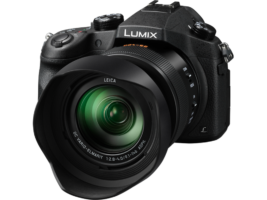Prefatory note: This isn’t intended as a ‘be all, end all’ review, but rather a set of impressions of these two recent hybrid cameras produced by Canon.
I wanted to add my experiences and opinions to the already exploding body of reviews and dissections on the net, hopefully to help others who are trying to decide on a new addition to their photo arsenal. I won’t go into the minutia of tech specs here, as this is available all over the web. Nor is this intended as an opinion of the merits of Canon vs Nikon or any other brand.
I bought the 5D MKII in early 2009 and the 7D in the early fall of that year, shortly after it came out. Since then, I’ve shot the 5D MKII around my home state of Washington, in the humid tropical environment of Belize in Central America, and both models just recently in Antarctica.
I’ve been photographing as a professional for more than 40 years (!), starting with a Leica M2 rangefinder and have used a fairly broad slice of Nikon and Canon film SLRs in previous years, and more recently a Canon 1Ds and 1Ds MKII. How I see the 5D and 7D fitting into this lineup will be covered later.
One thing that has bugged me in recent times in the 35mm/DSLR professional market is size-creep. Sort of like Detroit’s famous and now much-maligned bloated car trend of the 70s and 80s, this class of camera kept getting bigger and heavier with each new model, albeit with new features and capabilities. By the time the 1D/s series debuted, one had to take up weight training in order to put more than one body and lens around your neck! These puppies were heavy!
And, the camera motor drives and shutters sounded like small, personal machine guns when fired. Listen to any politician’s news conference on TV and sometimes it’s hard to hear the speaker for all of the staccato shutters firing! Gone were the days when you could effectively do candid street photography or photojournalism undetected. If you were trying to work relatively close to wildlife, your presence was instantly telegraphed to the subject and if it didn’t bolt and run, it was sure difficult to get it to resume its normal behavior.
In contrast, the beauty of the now-retro Leica rangefinder design was that the unit was small, lightweight, quick and precise — the opposite of the direction modern professional cameras were evolving.
The Canon 5D MKII was the first of Canon’s hybrid DSLRs intended for the professional market. It is much smaller and lighter weight than its professional big brothers/sisters, more reminiscent of Canon’s A2 35mm film camera in size and feel. The shutter is an order of magnitude quieter than the bigger cameras. Once I had it in my hands, I realized that the days of my 1Ds series were numbered. At least for me. So… off they went to eBay.
A couple of features that stood out early on: the much larger rear LCD screen was a pleasure to review your shots on. And Canon finally added what approached a 21st Century menu system for choosing various camera functions. Anyone who tried to navigate the earlier 1D series menu options without a manual handy was quickly driven to the edge. At least now one could figure out most of the options without resorting to more than a passing reference to the manual.
Canon also employs a very effective anti-dust, sensor-cleaning function that so far has worked flawlessly in both the 5D MKII and 7D — the sensor vibrates ultrasonically for a few seconds on power up and power down, shaking grains of dust off the sensor surface. For anyone who has tried to keep the sensor clean on any camera that does not have some sort of auto-cleaning routine, or has spent countless hours dust spotting images, this is a major breakthrough. I’ve yet to find any serious dust spots on any of my images, and when I have seen some, it usually doesn’t stay long, as the sensor cleaning routine usually takes care of it.
Images from the 5D’s 21 megapixel sensor are stunning, especially at ISO’s below about 800. While noise is prominent at ISO’s above this, it isn’t objectionable until you get above about 1600 – 3200 ISO. Even at those ranges, the sensor’s sensitivity enables one to do handheld photojournalistic work that just a few years ago was considered impossible.
The current generation of uber-sensors like in the 5 and 7D bring up a point that I had been growing aware of when I had the Canon 1Ds MKII (17 megapixels). I am beginning to see these sensors outpacing lens development — that is the increasing ability of the sensor to resolve is not being matched by the current family of lenses, particularly zoom lenses. At least with the L-series zoom lenses I have been using with these cameras, the degree of enlargement that is possible now is beginning to reveal any shortcomings in the lenses you might use.
Years ago (like 30 or 40), pro photogs and serious amateurs alike disdained using zoom lenses for mission-critical work because of their notorious flaws: lack of sharpness and contrast, distortion, etc. Fixed-focal, or prime, lenses were the genre of choice. This prejudice has flipped around in more recent decades as zoom lens technology has improved markedly. Now if you see a pro in the field, he or she likely has few if any non-zooms around the neck or on the tripod.
If I can hazard a prediction, I forecast camera manufacturers coming out with a next generation of “ultra-pro” lenses that have higher resolving power and contrast. So keep your piggy banks well-fed, you’ll need the cash!
